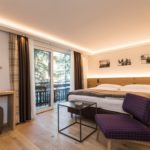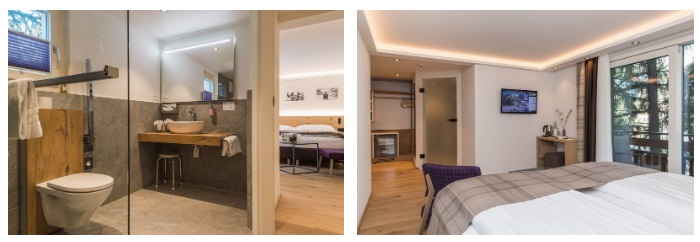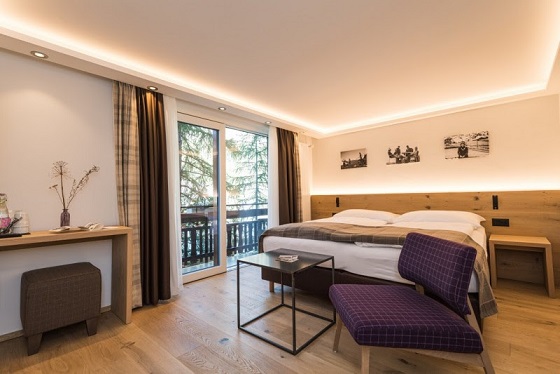 Accessibility in travel is not a universally understood term. It is used differently in many places. In essence, however, it always means that travel should be possible for everyone and that barriers of all kinds should be removed. This is also part of sustainability in travel.
Accessibility in travel is not a universally understood term. It is used differently in many places. In essence, however, it always means that travel should be possible for everyone and that barriers of all kinds should be removed. This is also part of sustainability in travel.
The everyday life and the environment in which we live and travel are largely not designed for people with disabilities. This means that where they go, they encounter obstacles such as stairs, low-contrast signage or a lack of guidance sounds and signage systems. Today, we present Green Pearls® partners who enable people with disabilities to enjoy a relaxed holiday that is also as independent as possible. In addition, the partners reveal excursion destinations in their area that can be experienced without having to worry about barriers.
Barrier-Free Hiking and Wellness Getaway in Berchtesgadener Land
Under the motto “National Park for All”, Berchtesgaden National Park offers a unique nature experience for all travellers. Especially in the Klausbach Valley, many points of the model management plan of the regional administration have already been implemented, which aims to advance the accessibility of the national parks. Numerous hiking trails run through the valley, almost all of which are accessible by wheelchair. Diverse paths ensure that people can adapt the routes to their individual needs. Benches invite visitors to rest and take a break every 200 metres or so, and cattle grids are designed with crossing plates.
A special highlight is the barrier-free suspension bridge over the Klausbach stream and the wheelchair-accessible viewing platform at the game feeding area. Special guided tours for people with walking, visual or hearing impairments are also on offer. In summer, there is also a public low-floor bus in the valley, which also serves the most important sights.
Sustainable and Accessible Hotels in Berchtesgadener Land
Barrier-free accommodation at the Klosterhof – Alpine Hideaway & Spa
Awarded the “Barrier-free for people with walking disabilities” label, the Hotel Klosterhof – Alpine Hideaway & Spa offers a sustainable accommodation and wellness option for travellers with limited mobility.
Two rooms are completely barrier-free and, with a few exceptions in the spa area, guests can enter all public areas without restriction or can access them with a wheelchair. This also includes the fact that the tables in the restaurant are wheelchair accessible. The detailed test report by “Reisen für alle” (Travel for all) is available here
Excursion tip from the Klosterhof
“The boat trip on the Königssee.” Please note: The entrance is not accessible by wheelchair. However, the boat staff will be happy to help.
All-round well-being at the Berghotel Rehlegg
The 25 rooms of the guesthouse at Berghotel Rehlegg are not marked as barrier-free but can be enjoyed by people with disabilities with the help of an accompanying person. There are level showers in the bathroom and lifts also make the upper floors accessible.
Excursion tips from the Berghotel Rehlegg
“Many attractions in Berchtesgaden and the Berchtesgadener Land are also barrier-free! These include the Jennerbahn, boat tours on the Königssee, the Haus der Berge, the Kehlsteinhaus, the Watzmann Therme, the hanging bridge at the Klausbachhaus, the Graßl gentian distillery, the circular path around the Hintersee or the Ramsau village path with spa garden and graduation house.”

Barrier-Free Travel in the Allgäu
At the HUBERTUS Mountain Refugio, the 46 rooms of the Mountain Nest are located at ground level. Guests can reach the upper floors by means of an elevator. If the many noises and lights in the hotel restaurant cause problems, which can be the case for hypersensitive people, for example, this is also no cause for concern. These guests can escape the sensory overload by ordering their meals directly to their room. A call to the room service is all it takes.
Excursion tips from the HUBERTUS Mountain Refugio
“We recommend the Nebelhornbahn in Oberstdorf. This is the highest peak in the Oberallgäu region with a new cable car. Here there is a magnificent vantage point with a restaurant at the top station. In addition, some paths have been widened and are wheelchair accessible. Oberstdorf is also home to the ski jump. Here there are weekly barrier-free guided tours of the facility.”
Travelling in Switzerland: Accessible and Sustainable
“A trip to the Gornergrat is always something very impressive,” says Fabienne Anthamatten from the Hotel Bella Vista in Zermatt. In the small sustainable hotel, one of the rooms is completely barrier-free. The breakfast room is also accessible without obstacles by people with walking impairments. The staff is trained and attentive, so there is always someone on hand who should help or assistance be needed.

The train takes you up to the Gornergrat, 3100 metres above sea level. The Matterhorn is in view the whole time and from the top, you have a magnificent view over the 4000-metre peaks and the glaciers of the region. The train has low-floor carriages that are easily accessible by wheelchair and barrier-free toilets are available at the summit.
Inclusive, Sustainable, Accessible
A pioneer for inclusion and accessibility is the Green City Hotel Vauban in Freiburg on the edge of the Black Forest. People with and without disabilities work together here on an equal footing so that accessibility is a matter of course in everyday work and hotel life.
Situated on the edge of the almost car-free and self-sufficient district of Vauban, the Green City Hotel has also dedicated itself to sustainability from the ground up. This includes a green façade, a photovoltaic system on the roof, and close partnerships with regional (inclusive) businesses.
Various barrier-free city tours are offered in Freiburg. Tours can be tailored individually or you can opt for a thematic city tour, for example on art history or Freiburg legends and sagas.
Sustainable travel should be possible for all. The Green Pearls® partners set an example by not only focusing on their environmental footprint but also on travellers with and without disabilities.
Edited by: Jill Walsh
=======================================



















